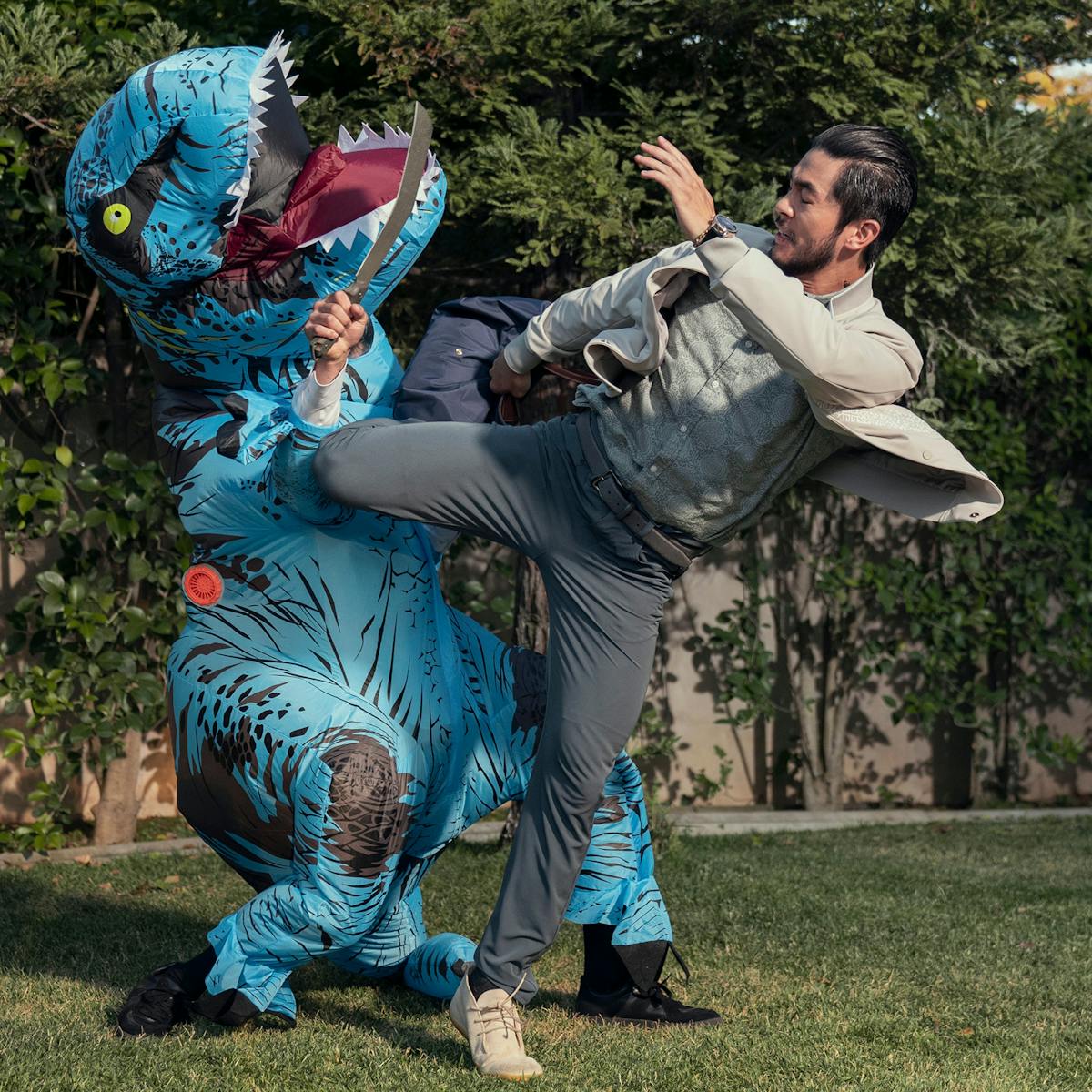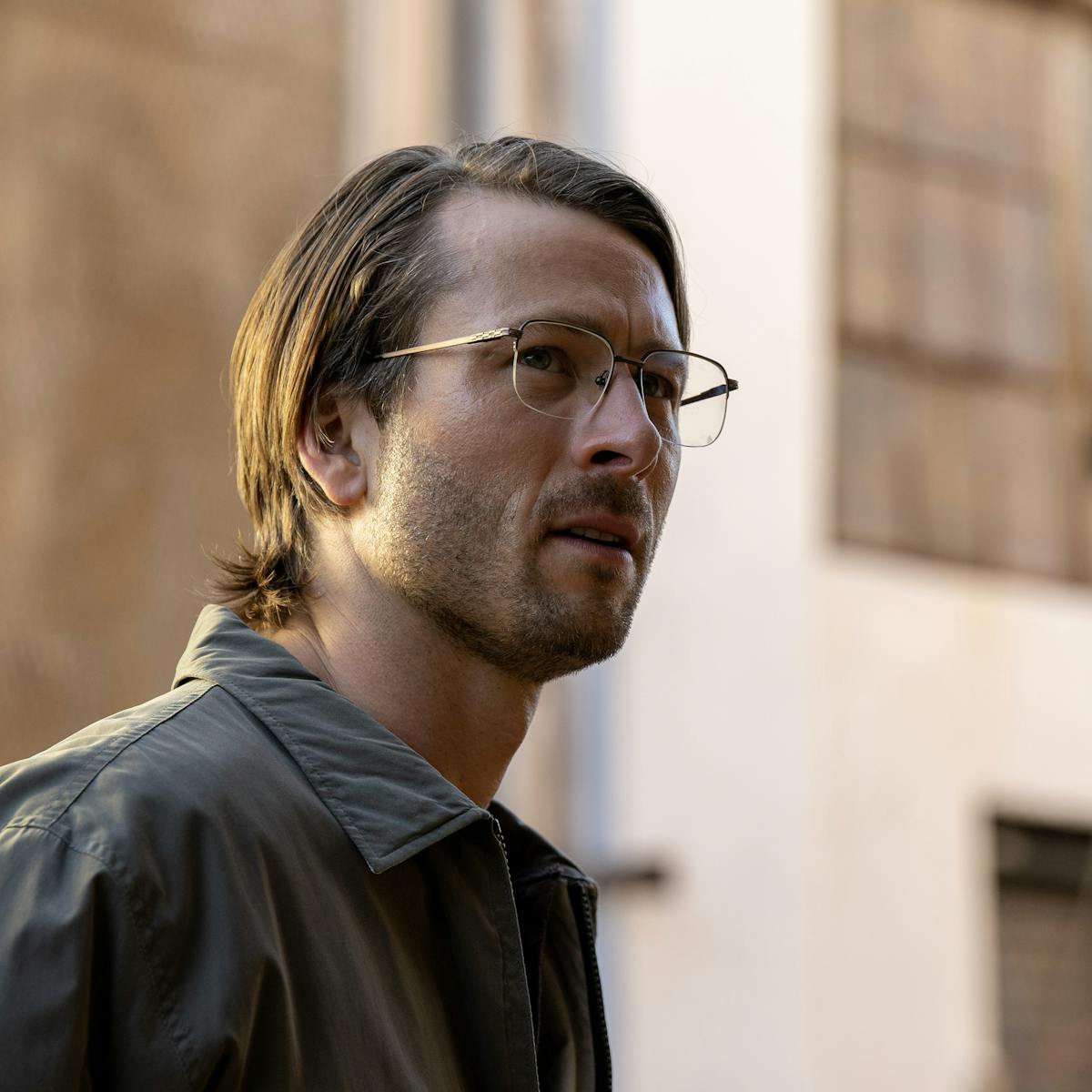Director Johan Renck mixes a love story with a journey of otherworldly self-discovery.
Filmmaker Johan Renck was not looking for his next film when a script entered his orbit that felt too compelling to ignore. “I came out of a very big project that I’d spent a couple of years on, and I was really exhausted and spent. I was contemplating what to do with my existence as I always do after any big project,” the director reflects. “Then [this] script came along and I read it and I understood I had to engage with this because it’s a story about me, basically. I related it and identified with so many aspects of it.”
The script was for Spaceman, an adaptation of Czech American writer Jaroslav Kalfař’s novel Spaceman of Bohemia. The intergalactic drama follows an astronaut named Jakub (Adam Sandler) who is six months into a solo journey to the fringes of space to learn more about a mystifying dust cloud. While on this expedition, Jakub slowly realizes that his marriage with Lenka (Carey Mulligan) is on shaky ground and might not survive his complicated mission.
Struggling to communicate and connect with his wife back on Earth, Jakub finds unexpected solace in Hanuš, an ancient, spider-like creature that’s been hiding in the technology of Jakub’s spacecraft, voiced by Paul Dano. “I have arachnophobia, so the spider idea, at the onset, was tricky for me,” laughs Renck. To translate author Kalfař’s surreal imagining for the screen, the director worked with creature designer Carlos Huante (Dune: Part One), production designer Jan Houllevigue (Sexy Beast), and cinematographer Jakob Ihre (Chernobyl).
Renck, who is known for his music videos for the likes of David Bowie, Madonna, Kylie Minogue, and Lana del Rey, is no stranger to directing daunting technological tales: He earned a Directors Guild Award and a Primetime Emmy Award for his work on the gripping, critically-acclaimed miniseries, Chernobyl. Following his film’s Berlin Film Festival premiere, Renck spoke with Queue about working with such formidable performers and finding a fresh approach to science fiction.
An edited version of the conversation follows.
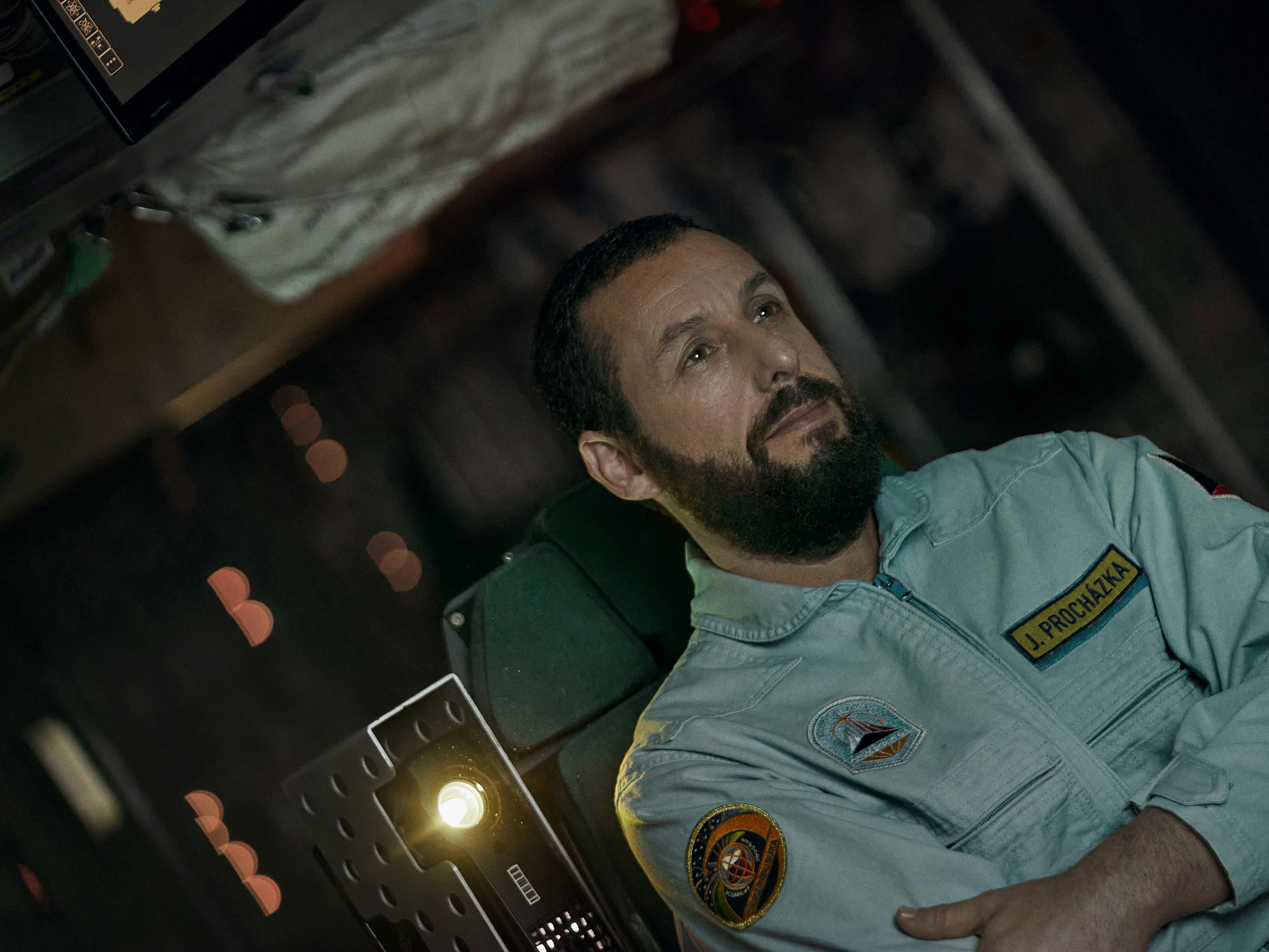
Jakub (Adam Sandler)
Jenny Changnon: Adam Sandler has such an incredible range and we’ve seen so many types of performances from him, but not one quite like this. When did you know that Adam Sandler was the right fit for Jakub?
Johan Renck: I was always a big fan of Adam and everything he’s done because I think he’s phenomenal. Not only is he talented, but he’s so watchable. Something with that face. I don’t know what it is, I can just watch that guy. He really was intrigued [by the script] from the onset. There was an idea that he was perfect for the role because he is completely relatable.
Lenka is such a powerful force throughout the film. What was it like working with Carey Mulligan on this character?
JR: She’s one of the most formidable actors out there, both in terms of her pure talent, but also technically scaled. She could do anything. I tend to draw on to people with a certain darkness, I guess, behind their eyes.
It couldn’t be better in terms of the part she’s supposed to play and what she’s supposed to embody and what that character means. Because it is tricky with these kinds of films, male-driven narratives; to some extent, there’s this chance of her becoming a device in this story more than anything else, which is problematic. It’s the thing with movies — they’re only an hour and a half, maybe two hours, and you’ve got to pack a lot of stuff in there. At times it can be difficult to deal with all the intricacies you need to within the character. She’s so compelling and she does so much with so little real estate, so to speak. That’s because of her and her skills and her persona.
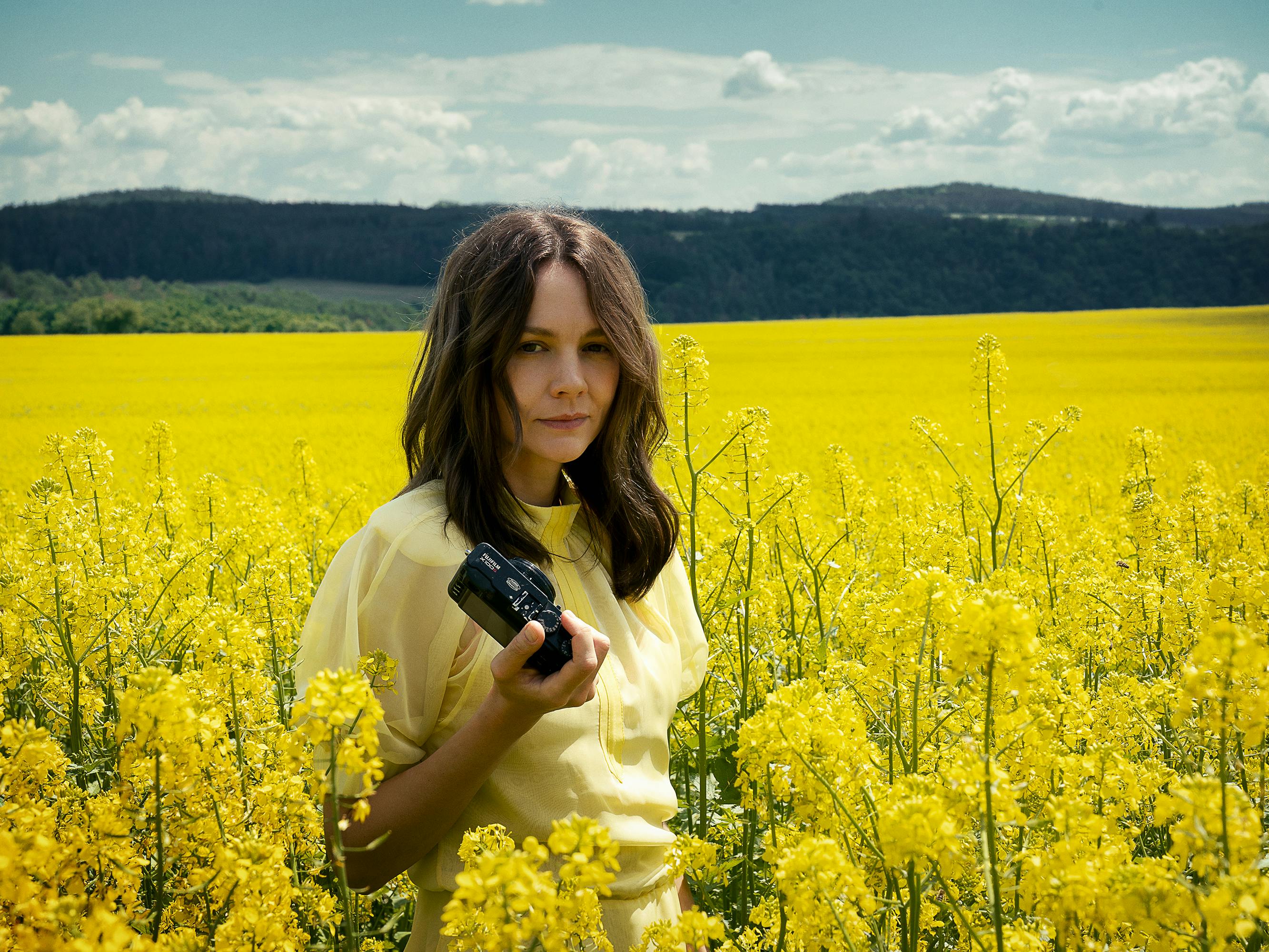
Lenka (Carey Mulligan)
Photograph by Larry Horricks
The flashbacks to their relationship are full of love and passion, but we see them as their relationship is falling apart. What was it like building that chemistry between the two actors?
JR: These are two really beautiful human beings — generous, warm, big-hearted. She adores him as a human being. He adores her. [They were] courteous and respectful and [it was] just beautiful to see the friendship between the two [of] them. It was something special. They came together in a really beautiful way.
There’s love and there’s instances of love, and then you have whatever comes after. The contrast — it’s going to be very stark no matter how you deal with it because at the conception of love, you have this promise between the two of you, which is uttered in the phrase [in the film], “I go where you go and you go where I go.” That’s the deal in any relationship.
The contract becomes historic because you have this tenderness, this love, this kind of connection that you see that they have, and then that is replaced with physical distance, being in mentally different places in their journey in life. For Lenka, she’s been alone so much that she’s gotten used to being alone.
The third member of the triangle in the film is, of course, Hanuš, who’s incredibly emotive.
JR: Jaroslav is so great at writing these dreamy, weird, trippy things like that. Hanuš needs to be both scary and cute, and he needs to be both wisdom and naïveté and all these kinds of things. I wanted him to be a little scruffy and cute for sure. I worked with this really great [creature designer] Carlos Huante and we had this back and forth. The first thought ever [for Hanuš] was Paul Dano because of the cadence in his voice. It was a given.
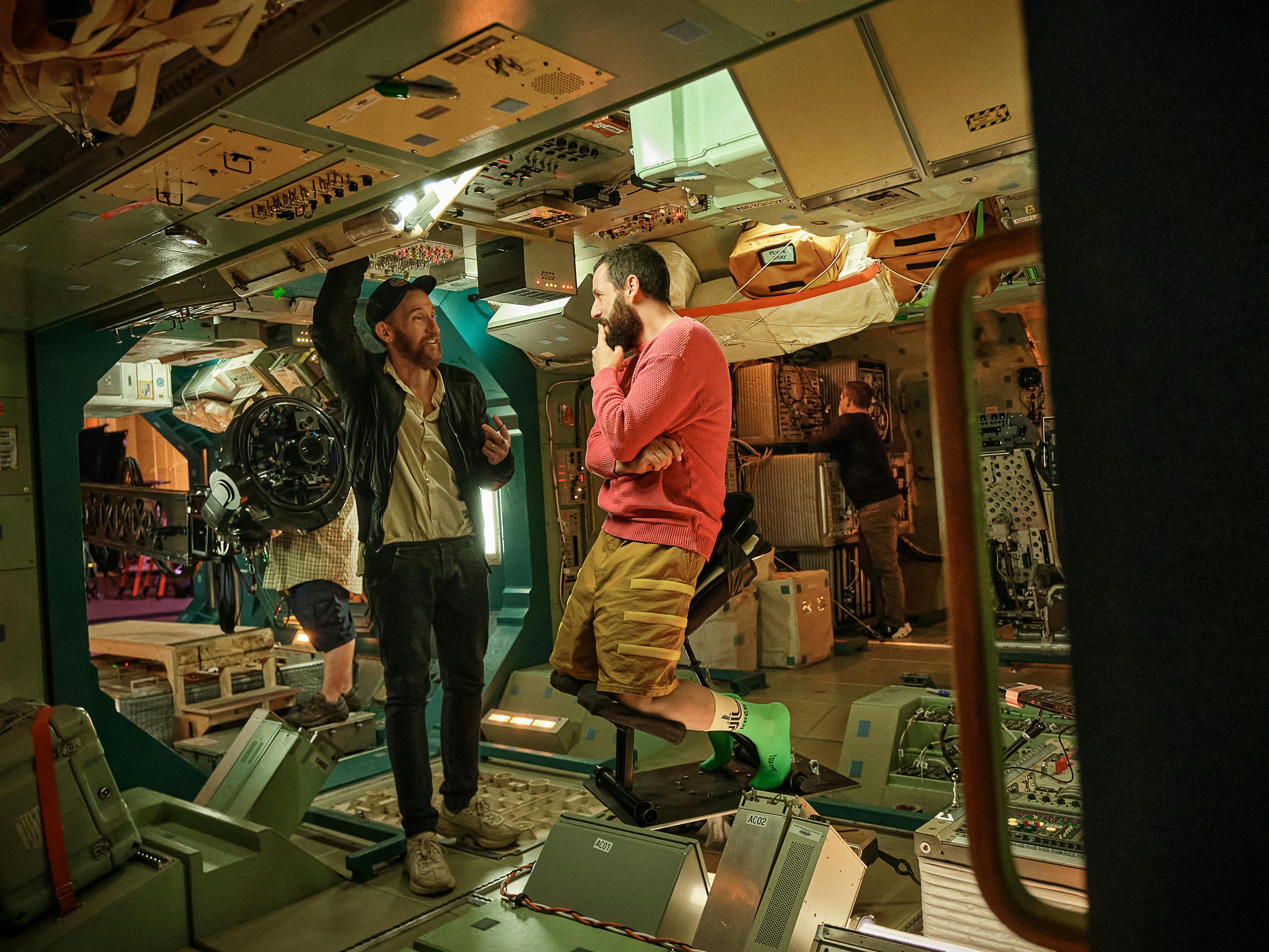
Johan Renck and Adam Sandler
One of the things that is unique about this idea of space: The spacecraft feels very analog and tactile. In the sci-fi genre, everything is usually sleek or overly clean.
JR: I don’t like sleek. I’m a photographer partly and for me, a big part of making films is the image creation. The number one aspect of creating a great image is the production design. So, for me, it always starts with that. And Jan Houllevigue, my production designer, he’s a pure master, and he and I have this shorthand. [With] a spaceship, you need everything to be accessible. You can’t have wirework behind panels in the wall. What if something breaks? You need to have everything right there in your face. I don’t want it to be in the future, but I don’t want it to be in the past. We’re somewhere in some kind of retro-futuristic parallel world because we can [be]. So for me, I just want a visually compelling word. I want it to be messy. I want it to be claustrophobic. I want it to be form and function more than anything else.
The zero gravity element is fascinating. The way the camera moves — it has a real physicality and dexterity. How did you work to capture that zero gravity feeling, but also keep it grounded?
JR: Zero gravity is obviously a tricky beast. We had to use every trick in the book to try to figure that out. But one thing that was really important for me was that we have to subject the camera to the same physical restrictions that we have wherever we shoot. If we’re shooting on land, we can put it on sticks, we can put it on a dolly. That works. If we’re shooting underwater, we’re not going to put the camera on sticks on the water anywhere. We’re going to be floating around and it’ll have that liquid flavor to it. For shooting in space, [it’s the] same thing there. We have to mimic the rules of physics in space to give the experience of being there. I always want to try to make stuff as experiential as possible.
The score really conveys the loneliness and the emotional journey of the film. What was it like working with Max Richter?
JR: I come from music. I love music as a vessel or a tool to help us get drawn in and float away into the film. I’m a massive fan of Max’s. He’s this pure, minimalist genius. I can still — even after editing and watching this film 52 billion times — get goosebumps from the score because of how it works and how beautiful it is, and how fucking masterful Max is. And I think the music became just absolutely perfect in its warmth and its stolen melancholy and its embrace of what this film is. It’s the opposite of cynical. It’s actually quite romantic, I think.



